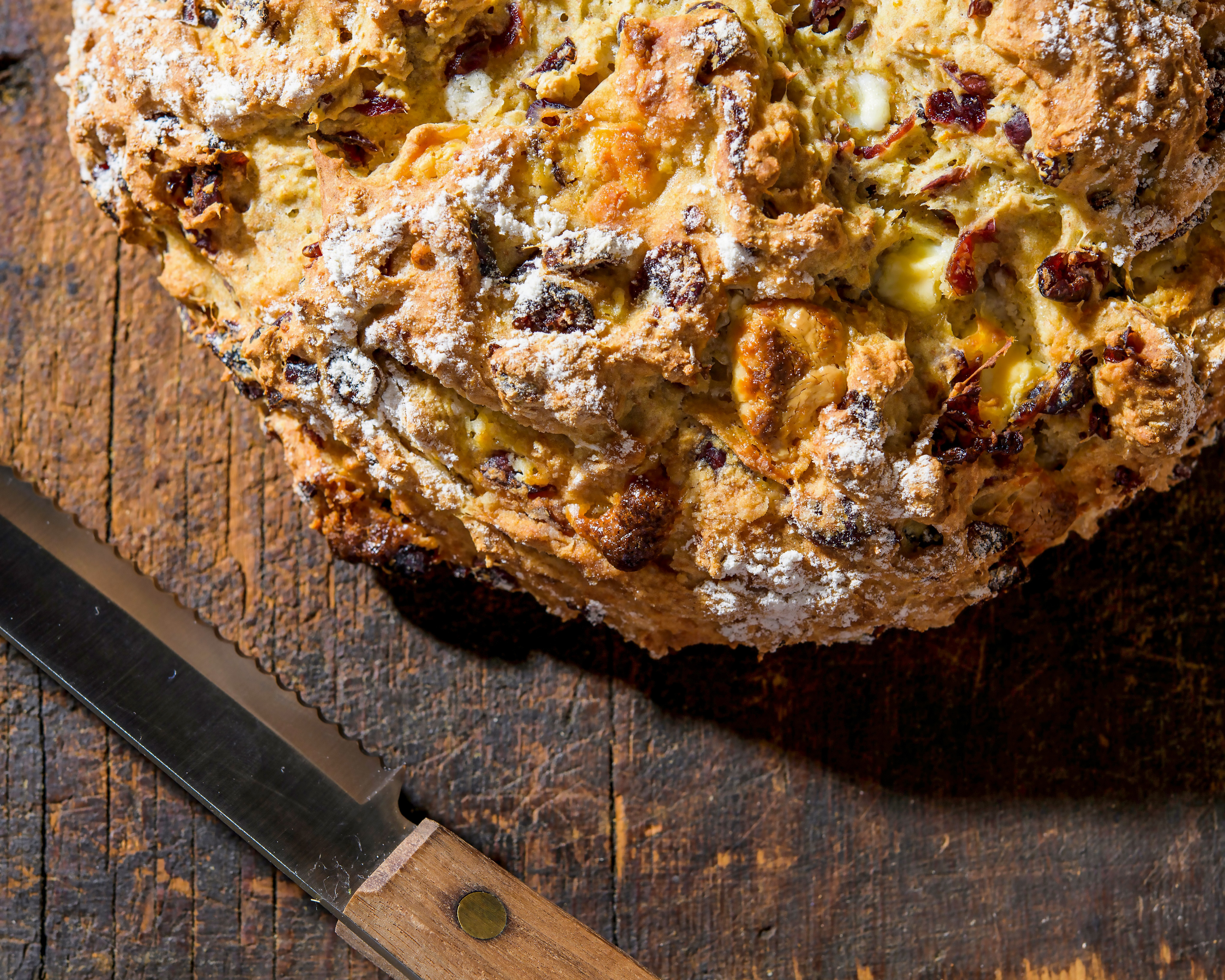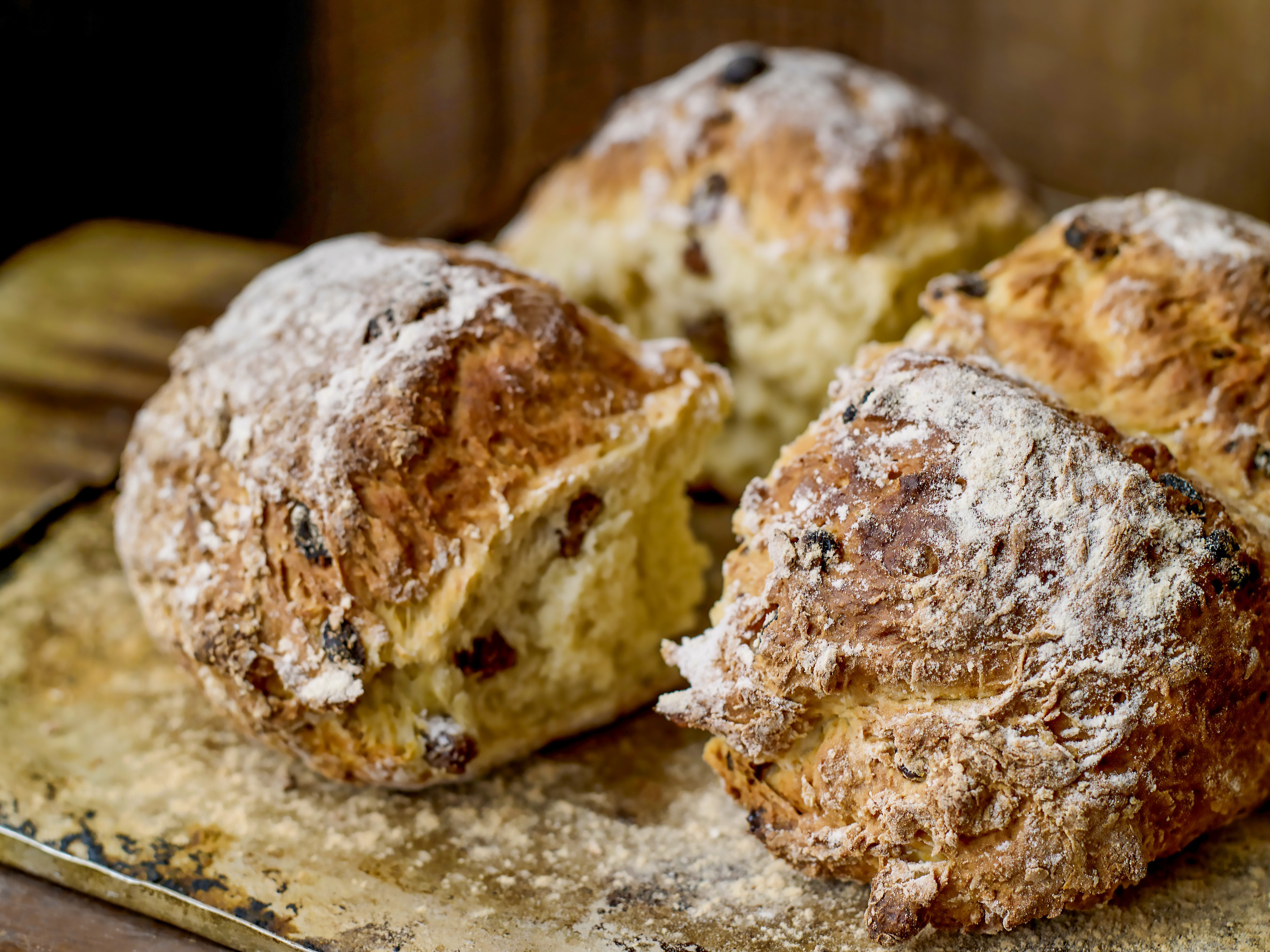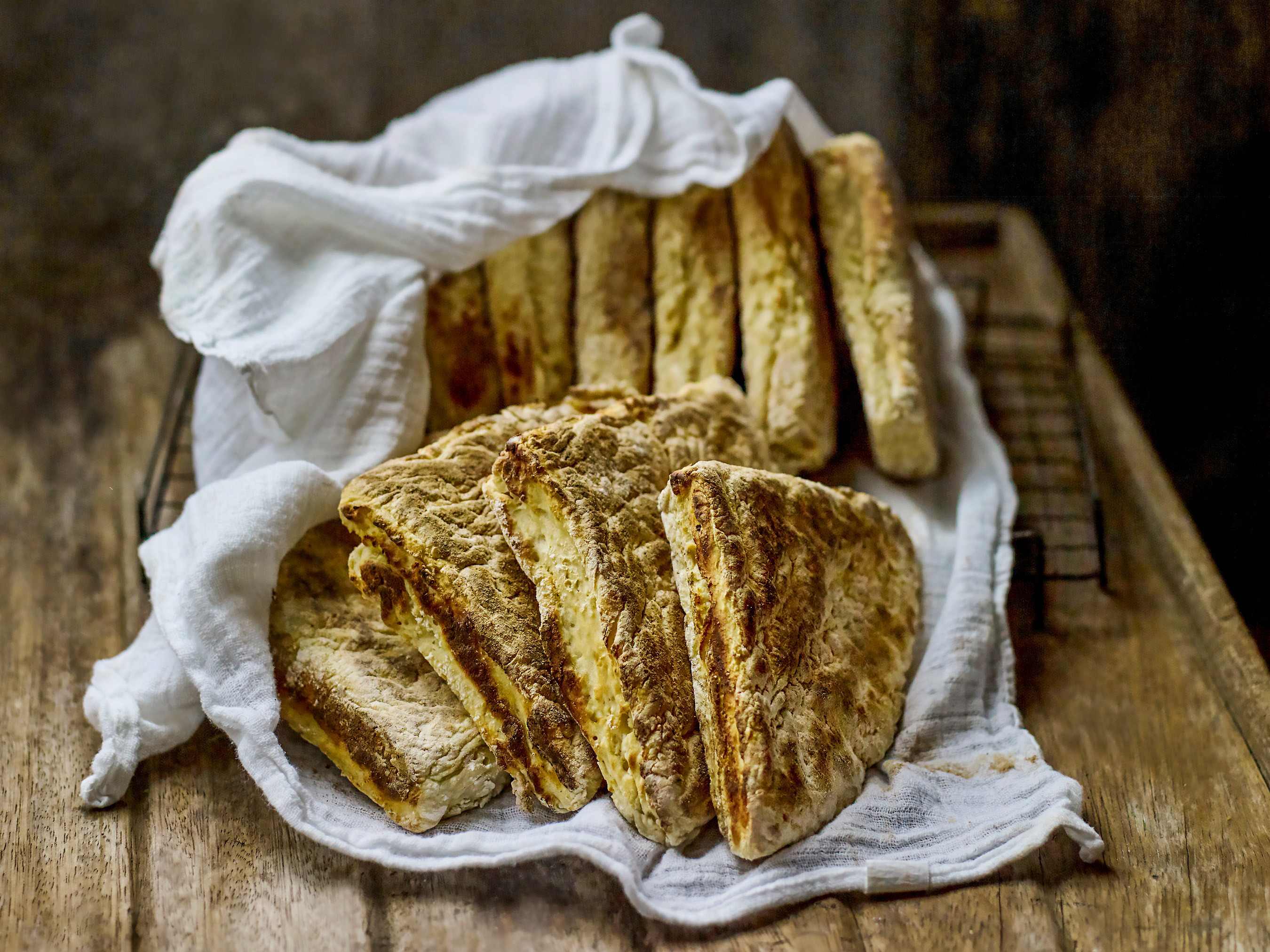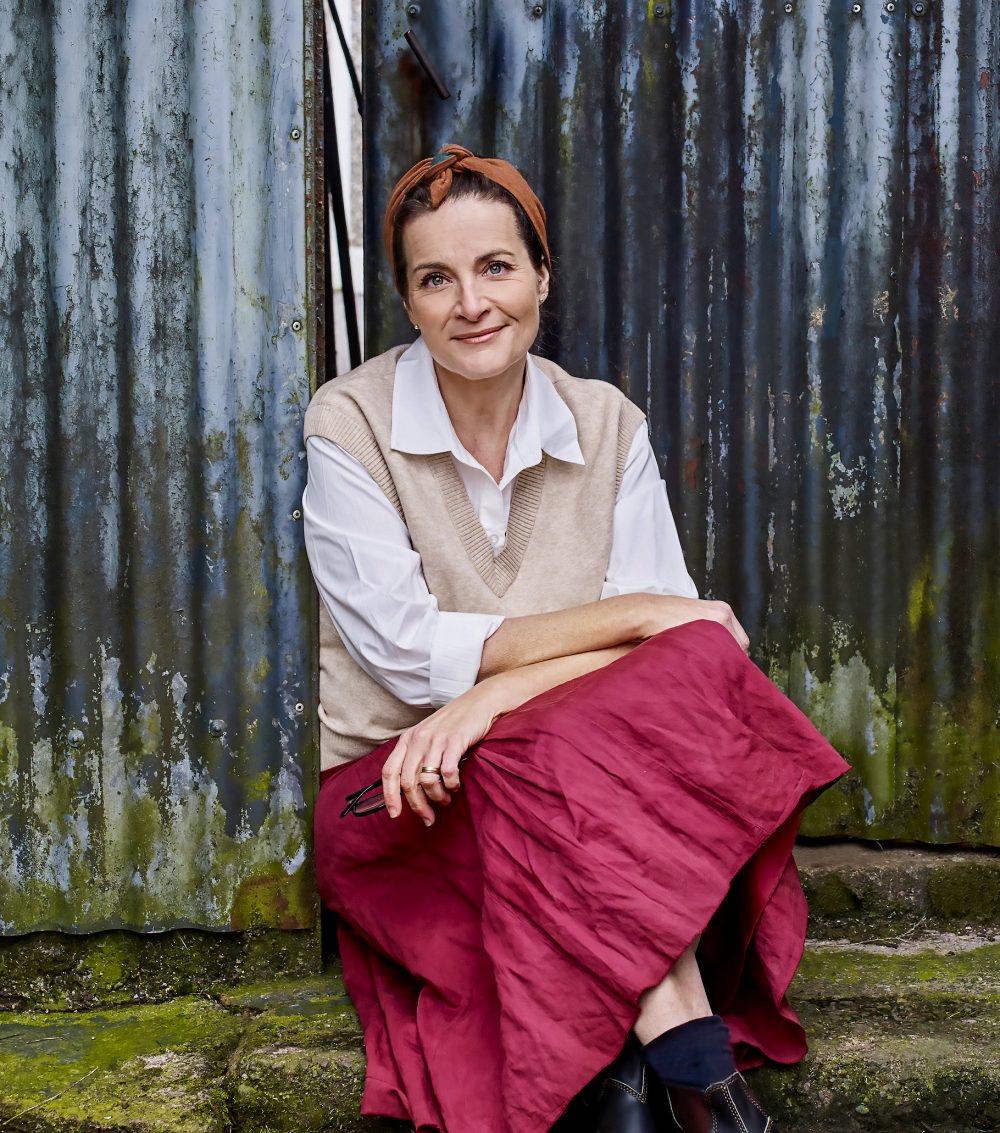Luckily, Cherie knows how to solve your soda bread problems. Her cookbook, The Irish Bakery, features many delicious soda bread recipes, and she’ll be teaching an online class on March 9, where she’ll show you how to make perfect soda bread (two ways, with homemade butter!). In the meantime, she was kind enough to hop on a call and discuss the ins and outs of Ireland’s most famous quick bread.
Soda bread is firmly associated with St. Patrick's Day in the United States, but is it more of an everyday bread in Ireland?
Absolutely. My granny made what she called “cakes of soda bread,” and “soda farls,” and would make one of those breads every other day—wheaten bread as well. They're all made with bicarbonate of soda. Fresh bread was made every day, and on the odd occasion it wasn’t used, it was always toasted, or it was thrown out to the geese at Granny’s house. So the geese were the best fed geese around. But yeah, it's absolutely a daily bread.
What are the four ingredients required to make soda bread?

Plain flour, bicarb of soda, salt, and then your buttermilk. And whenever they made butter, they always used the buttermilk. And during the war my granny sold her butter and buttermilk—just kept some because she did have a family of 13 children to feed—she kept some and sold some as well to make money.
And when Mummy was wee they used to call it “sour milk,” because they called the other normal milk “sweet milk” and they used to drink buttermilk. They loved it. She thought sweet milk was too rich.
This is a very American question, but what’s the difference between soda bread and a scone?
They're basically the exact same thing. Whenever I make my plain scones, I use self-raising flour and I add a little bit of baking powder to give a bit of rise. But on the whole it's: Use plain flour for soda breads; and for scones, a lot of the time you do self-raising flour.
Then we have wheaten scones, we have treacle scones—I'm just doing some Guinness scones at the minute—and sometimes you mix between the plain flour and the self-raising flour and the baking powder and bicarbonate of soda. It's crazy. But they're practically the same thing, only bigger.
What are the characteristics of a proper soda bread?

It's got a good color. It's soft in the middle, but on the outside there should be a nice crust. And when you turn it upside down and tap—same as most breads—it sounds nice and hollow. But a rustic scorched flour finish on the top of it is just so lovely.
And also, when you open it up in the middle, there shouldn't be any wee yellow dots. Because Granny used to blend her sodium bicarb in her hand, and I always sieve mine. But that's so the bicarbonate sort of breaks down. If it's not broken down enough, you'll have wee yellow dots all throughout your bread and that doesn't look nice. And if you hit that wee nugget of bicarb soda, it's like [makes a puckered face].
Some of the soda breads I’ve had fall apart as soon as you slice them. Should the slices hold together?
Yeah, definitely. So what Granny used to do—she always wrapped hers in clean, white, old bed [sheets] and pillowcases. And they were always really, really clean and white as snow. I have got muslins now that I use, and I wrap the soda breads in there after baking, so it steams as it cools, and the crust stays firm. They're soft inside and the crust won't be too hard either, but it doesn't all break up when you slice your bread. It keeps it in slices.
What are some ways that people commonly go wrong with soda bread?
Not adding enough liquid or adding too much. I find that I could use the same brand of flour, but at different times of the year there's different humidity in it. So it really is a case of having a feel for your bread, making a nice soft dough, but not sticky.
Also your oven needs to be piping hot before it goes in. If your oven's not hot enough, it just spreads, so it needs to get that real good burst of heat. You can put a baking sheet onto the top shelf, and get that real hot and then put your dough directly onto your baking sheet. You just need to be very careful that you remember that your baking sheet's hot.
What would make soda bread chewy or gummy?
Too much liquid added, or it hasn't been baked enough. It should go on the top shelf of the oven and it should be baked for at least 30-35 minutes.
In the North, we always shape soda bread into a circle, we really well-flour the handle of a wooden spoon, and we go down and across. My aunt Debbie always said that the cross kept the devil out of the house. And I'm sure you've heard this 100 times before, but we always put the knife into each quarter to keep the pixies out of the bread. Because if you let the pixies out then your bread will work, but if you don't the pixies will jinx your bread!
I actually hadn’t heard that before! Tell me a little bit about soda farls and how you make those

[It’s the] same mixture—plain flour, bicarbonate of soda, salt, and buttermilk. Mix it all together. Then roll it out until it's about a centimeter thick, and about the size of a dinner plate. Then cut it into four, so each quarter is a farl, and that means “quarter” in Ulster Scots, because where we are in Northern Ireland, we're very close to Scotland.
So what I do is I lift my griddle lid up between five and seven minutes. And then I get some flour and I scaip (scatter) the flour over it and it gets a really lovely scorched flour smell. And then I go underneath [the farls] with the bench scraper and just put them on 1-2-3-4, and keep them apart. And you can watch them rise—maybe three to five minutes each side. And if you haven’t got a griddle, just use a frying pan. It does the same job. You just need to keep your heat nice and medium so they don't get too hot. And then you turn the other side over. And then you do each of the edges. Otherwise Granny used to say, “They're not properly done! They've got a damp seam down inside and you don't want that!” My granny was fierce!
“The softer the dough, the better the bread, without a shadow of a doubt.”
Is the texture of the farls different than the soda bread that you bake in the oven?
Yes, it would be soft as well—because you wrap your farls in your muslin. But your soda farls, they’re chewy, but a nice chewy, and that's why you either cut them in fingers for your soft-boiled eggs, or cut them in half. In Northern Ireland there's bacon and egg sodas. You've got your soda farl and they cut it in half. And they butter it with lovely salted Irish butter and then they put bacon and a fried egg in the middle. And that's your breakfast.
What are your some of your favorite variations on soda bread?
I’ve got a really lovely one in the book--cheese and bacon. Oh my goodness, it's so delicious. Also, with a soda bread, what I'll do is I'll roll it flat, and when it's wild garlic season, I'll put wild garlic pesto all over it. And then cheeses and maybe ham, and roll that up and bake it like a loaf. Or I will roll it up, cut it into rings and then put it all onto a baking sheet and let it bake like that. And it's delicious. It's like a soda bread tear-and-share.
I didn't realize you could roll it up!
You need to do it quite quickly, so it doesn't stick; as you roll it, you need to make sure that there's lots of flour underneath so it doesn't stick. But the softer the dough, the better the bread, without a shadow of a doubt.
This interview has been lightly edited for clarity.
Photos by Andrew Montgomery.
Join the conversation on Facebook, Instagram, TikTok and Pinterest.
And if you're looking for more Milk Street, check out our livestream cooking classes with our favorite chefs, home cooks and friends for global recipes, cooking methods and more.








